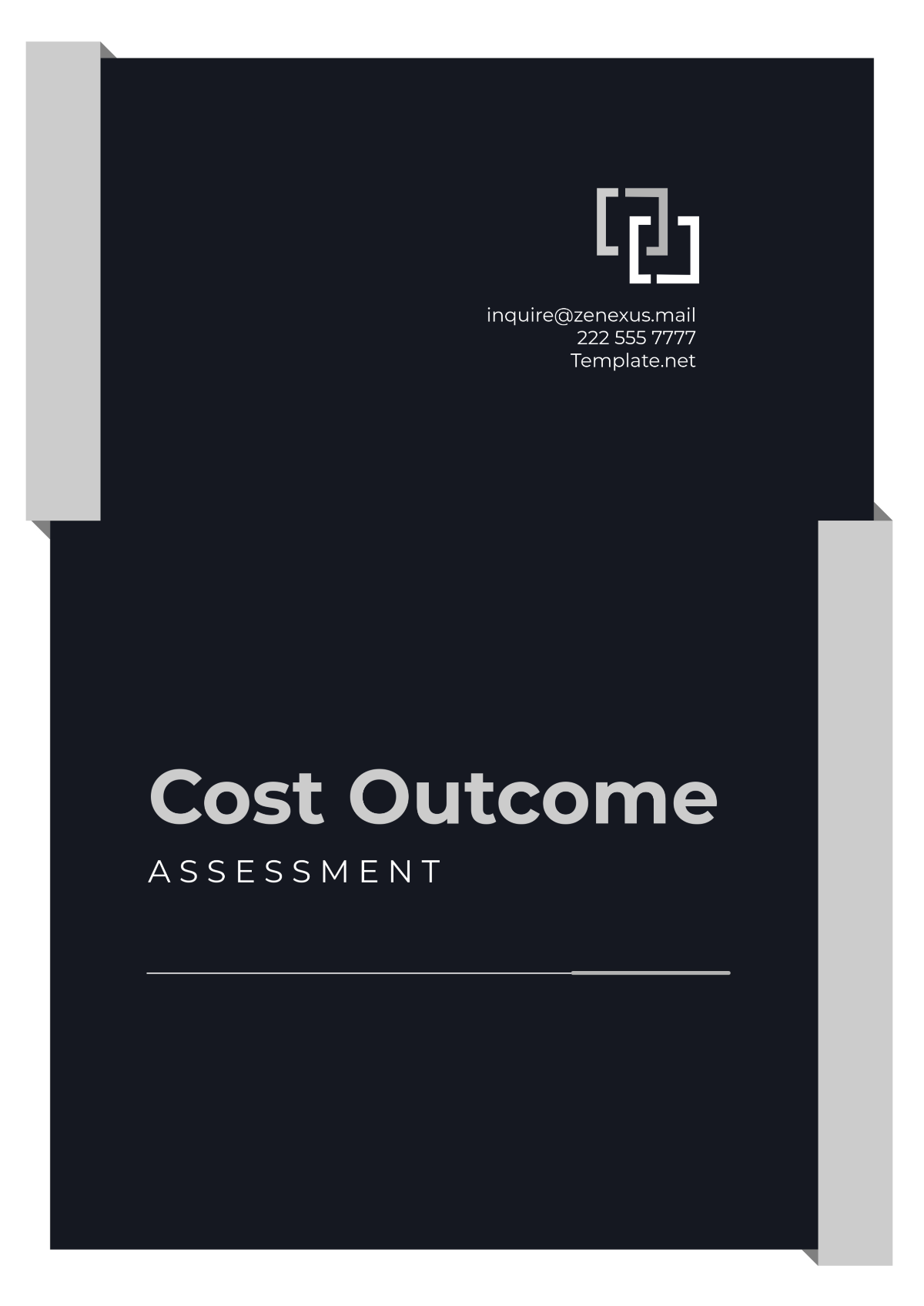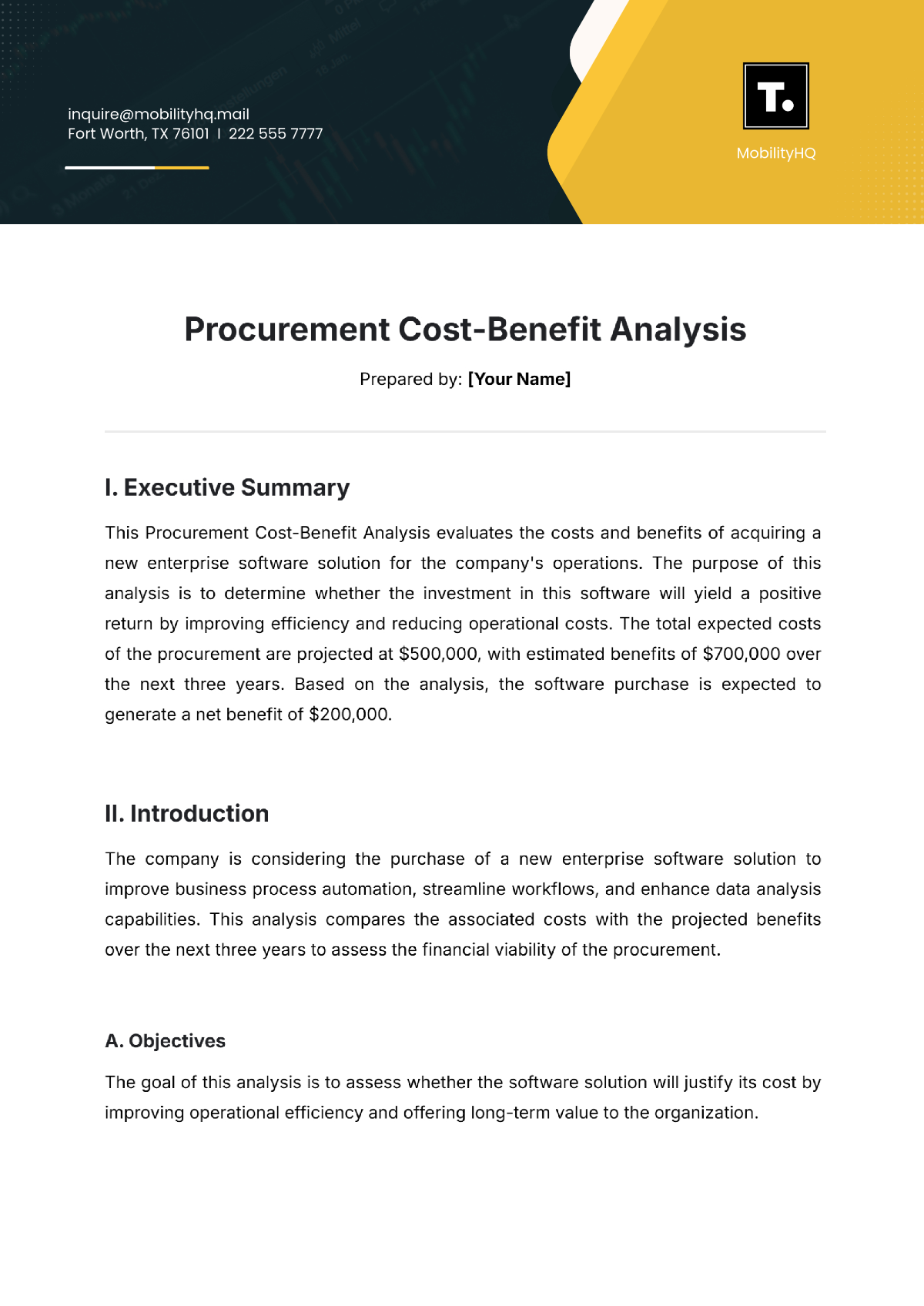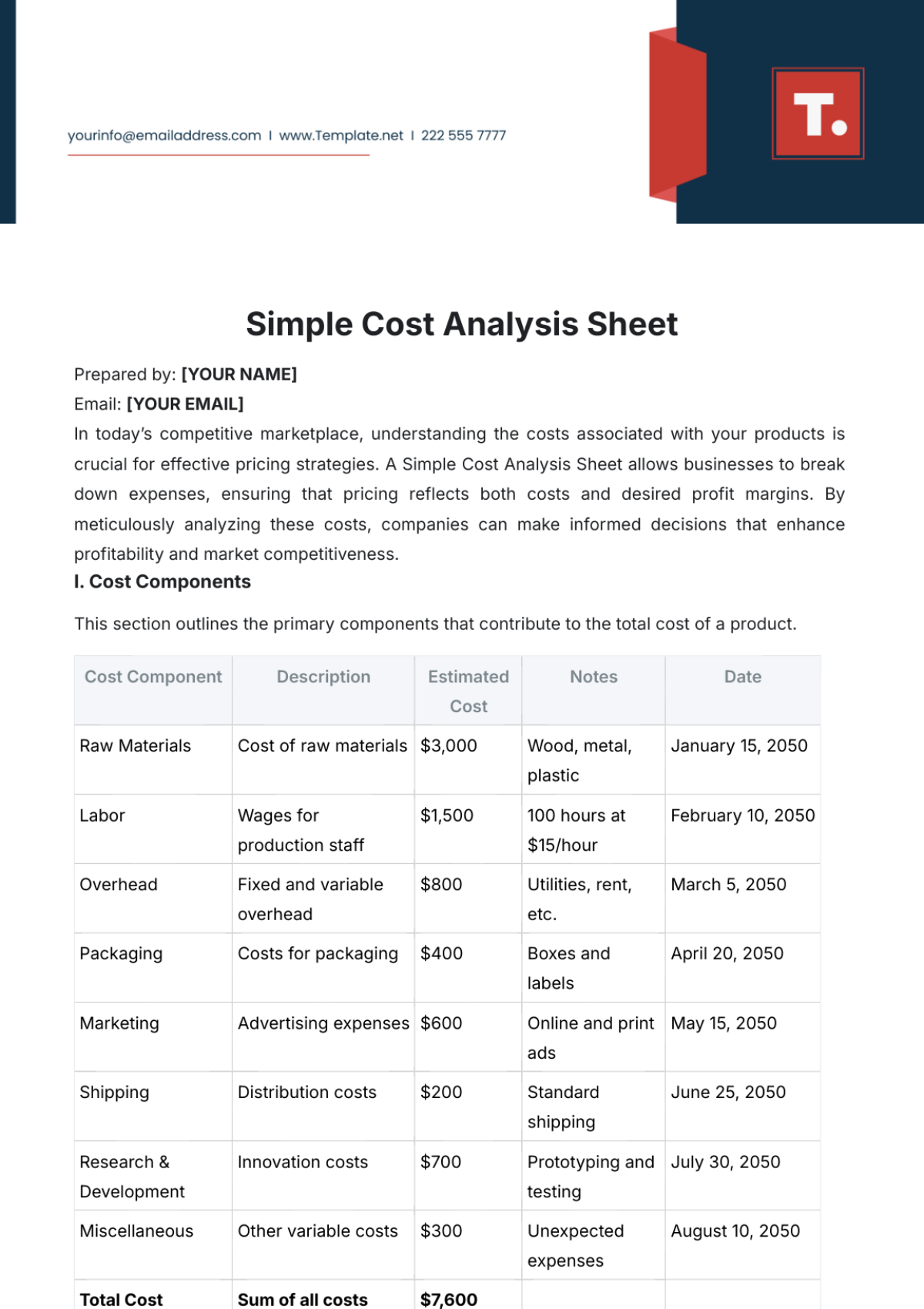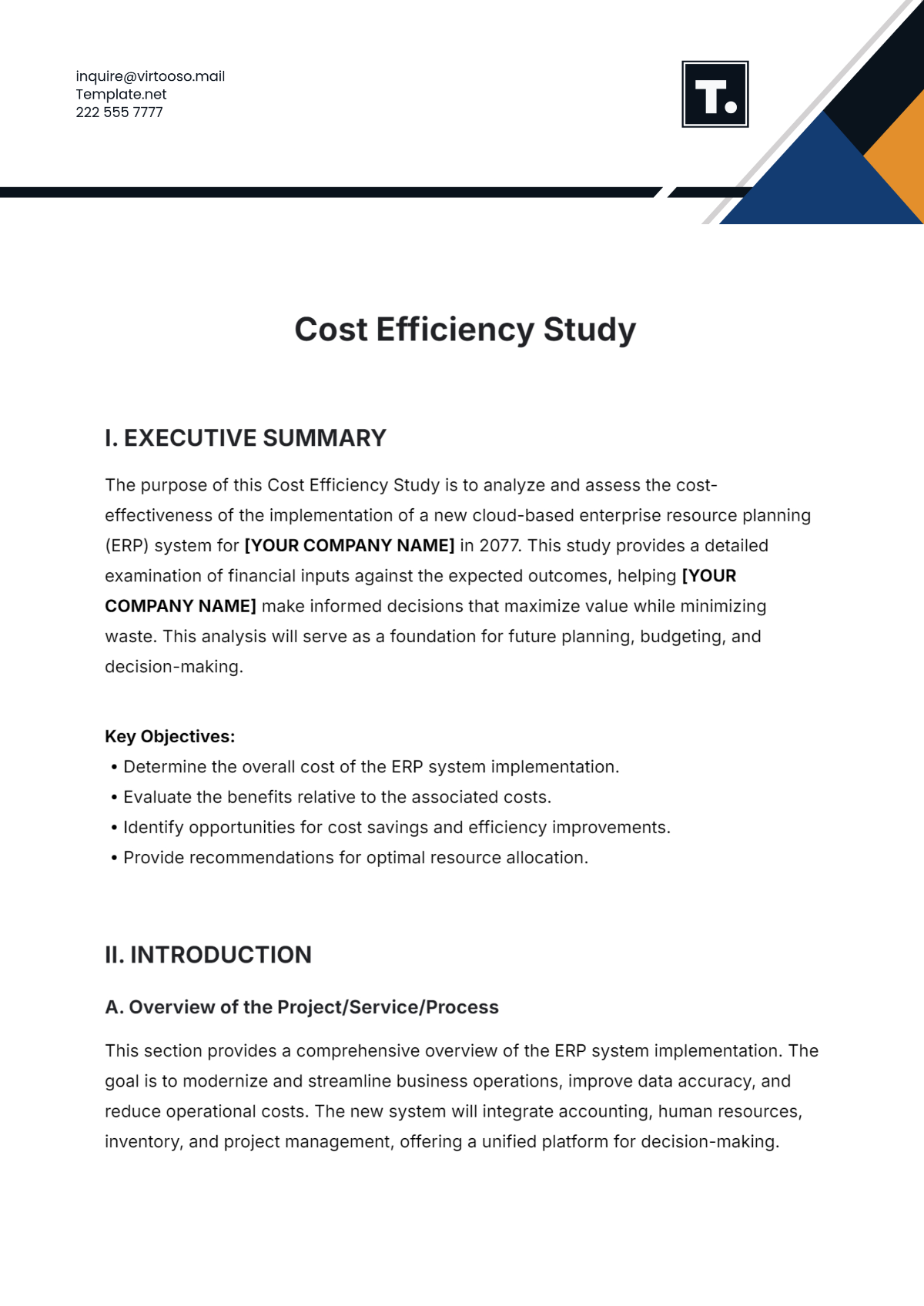Gym Profitability Analysis
I. Introduction
A. Purpose of the Analysis
The primary objective of this profitability analysis is to assess the financial performance of [Your Company Name]'s gym operations. This involves evaluating revenue streams, cost structures, and key financial metrics to understand the gym's profitability. Additionally, this analysis seeks to identify areas for potential improvement and provide strategic recommendations to enhance profitability. By conducting this comprehensive analysis, [Your Company Name] aims to make informed decisions that drive financial success and ensure sustainable growth.
B. Background Information
[Your Company Name] was established with the mission to promote health and fitness in the community. Over the years, the gym has expanded its services to include a wide range of fitness options such as personal training, group classes, and wellness programs. The gym caters to a diverse clientele, ranging from fitness enthusiasts to individuals seeking specialized training. The gym's facilities are equipped with state-of-the-art equipment and amenities designed to provide a holistic fitness experience.
II. Revenue Analysis
A. Membership Fees
Membership fees represent a significant portion of the gym's revenue. [Your Company Name] offers various membership plans to accommodate different needs and preferences. These include monthly, yearly, and premium memberships.
Table: Membership Plans and Fees
Membership Plan | Monthly Fee | Yearly Fee | Premium Fee |
|---|---|---|---|
Basic | $50 | $500 | $80/month |
Standard | $70 | $700 | $100/month |
Premium | $100 | $1,000 | $150/month |
Over the past year, membership growth has been steady. The introduction of premium memberships has contributed to increased revenue.
B. Personal Training and Group Classes
Revenue from personal training sessions and group fitness classes is another critical component of the gym's income. Personal training sessions are tailored to individual needs, providing a high level of customization and attention. Group fitness classes, on the other hand, offer a sense of community and motivation.
Table: Personal Training and Group Classes Revenue
Service Type | Average Monthly Revenue | Annual Revenue |
|---|---|---|
Personal Training | $15,000 | $180,000 |
Group Classes | $10,000 | $120,000 |
Personal training sessions have seen a significant increase in demand, particularly among members seeking specialized programs. Group classes, including yoga, spin, and high-intensity interval training (HIIT), continue to attract a wide range of participants.
C. Ancillary Services
In addition to core fitness services, [Your Company Name] generates revenue from ancillary services such as massage therapy, nutrition coaching, and wellness workshops. These services enhance the overall value proposition of the gym and provide additional revenue streams.
Table: Ancillary Services Revenue
Service Type | Average Monthly Revenue | Annual Revenue |
|---|---|---|
Massage Therapy | $5,000 | $60,000 |
Nutrition Coaching | $3,000 | $36,000 |
Wellness Workshops | $2,000 | $24,000 |
The holistic approach of combining fitness with wellness services has proven beneficial, attracting members who are interested in comprehensive health solutions.
D. Merchandise Sales
Merchandise sales, including gym apparel, supplements, and fitness equipment, contribute to the gym's revenue. These products are often branded with the gym's logo, fostering brand loyalty among members.
Table: Merchandise Sales Revenue
Merchandise Type | Average Monthly Revenue | Annual Revenue |
|---|---|---|
Apparel | $3,500 | $42,000 |
Supplements | $4,000 | $48,000 |
Equipment | $2,500 | $30,000 |
Merchandise sales have shown consistent growth, driven by effective marketing campaigns and the popularity of the gym's brand.
E. Seasonal and Promotional Revenue
Revenue during peak seasons, such as New Year’s and summer, and during promotional periods, can significantly impact the gym’s overall income. Seasonal promotions and membership drives are strategically timed to capitalize on increased interest in fitness.
Table: Seasonal and Promotional Revenue
Season/Promotion | Average Monthly Revenue | Seasonal Revenue |
|---|---|---|
New Year’s | $20,000 | $60,000 |
Summer | $15,000 | $45,000 |
Other Promotions | $10,000 | $30,000 |
These periods see a spike in new memberships and increased participation in classes and services.
III. Cost Analysis
A. Fixed Costs
Fixed costs are expenses that remain constant regardless of the gym’s level of activity. These include rent, utilities, salaries, and insurance.
Table: Fixed Costs
Cost Category | Monthly Cost | Annual Cost |
|---|---|---|
Rent | $10,000 | $120,000 |
Utilities | $2,000 | $24,000 |
Salaries | $30,000 | $360,000 |
Insurance | $1,500 | $18,000 |
Fixed costs form a substantial part of the gym's expenses, requiring careful management to maintain profitability.
B. Variable Costs
Variable costs fluctuate based on the gym’s level of activity. These include equipment maintenance, supplies, and marketing expenses.
Table: Variable Costs
Cost Category | Average Monthly Cost | Annual Cost |
|---|---|---|
Equipment Maintenance | $3,000 | $36,000 |
Supplies | $1,500 | $18,000 |
Marketing and Advertising | $4,000 | $48,000 |
Managing variable costs is crucial for maintaining operational efficiency and profitability.
C. Overhead Costs
Overhead costs encompass administrative expenses and miscellaneous costs necessary for day-to-day operations.
Table: Overhead Costs
Cost Category | Average Monthly Cost | Annual Cost |
|---|---|---|
Administrative | $2,500 | $30,000 |
Miscellaneous | $1,000 | $12,000 |
While overhead costs are necessary, keeping them in check is important for overall financial health.
IV. Profitability Metrics
A. Gross Profit Margin
The gross profit margin is a key indicator of the gym’s financial health. It represents the difference between revenue and the cost of goods sold, divided by total revenue. For [Your Company Name], the gross profit margin is calculated as follows:
Table: Gross Profit Margin Calculation
Metric | Value |
|---|---|
Total Revenue | $1,000,000 |
Cost of Goods Sold | $400,000 |
Gross Profit | $600,000 |
Gross Profit Margin | 60% |
A gross profit margin of 60% indicates that the gym retains $0.60 from every dollar of revenue after covering the direct costs of goods sold.
B. Net Profit Margin
Net profit margin provides a comprehensive measure of profitability, accounting for all expenses, including fixed, variable, and overhead costs. For [Your Company Name], the net profit margin is calculated as follows:
Table: Net Profit Margin Calculation
Metric | Value |
|---|---|
Total Revenue | $1,000,000 |
Total Expenses | $800,000 |
Net Profit | $200,000 |
Net Profit Margin | 20% |
A net profit margin of 20% indicates that the gym retains $0.20 from every dollar of revenue after all expenses have been deducted.
C. EBITDA (Earnings Before Interest, Taxes, Depreciation, and Amortization)
EBITDA is a measure of operational efficiency, excluding non-operational expenses such as interest, taxes, depreciation, and amortization. For [Your Company Name], the EBITDA is calculated as follows:
Table: EBITDA Calculation
Metric | Value |
|---|---|
Net Profit | $200,000 |
Interest | $10,000 |
Taxes | $30,000 |
Depreciation | $20,000 |
Amortization | $10,000 |
EBITDA | $270,000 |
V. Comparative Analysis
A. Industry Benchmarks
To assess the gym's performance, it is essential to compare its financial metrics with industry benchmarks. This comparison helps identify areas where [Your Company Name] excels and areas needing improvement.
Table: Industry Benchmarks Comparison
Metric | [Your Company Name] | Industry Average |
|---|---|---|
Gross Profit Margin | 60% | 55% |
Net Profit Margin | 20% | 15% |
EBITDA Margin | 27% | 25% |
Member Retention Rate | 85% | 80% |
Gross Profit Margin
[Your Company Name] has a gross profit margin of 60%, which is higher than the industry average of 55%. This indicates efficient management of direct costs and a strong pricing strategy.
Net Profit Margin
With a net profit margin of 20%, [Your Company Name] outperforms the industry average of 15%. This demonstrates effective control over both direct and indirect expenses, contributing to better overall profitability.
EBITDA Margin
The gym's EBITDA margin of 27% exceeds the industry average of 25%, reflecting superior operational efficiency and effective cost management. This suggests that the gym's core operations are highly profitable before accounting for non-operational expenses.
Member Retention Rate
[Your Company Name] has a member retention rate of 85%, compared to the industry average of 80%. High retention rates are indicative of strong customer satisfaction and loyalty, reducing the need for constant acquisition of new members.
B. Competitor Analysis
In addition to industry benchmarks, comparing financial performance with direct competitors provides valuable insights. This analysis helps [Your Company Name] understand its market position and identify competitive advantages or disadvantages.
Table: Competitor Analysis
Metric | [Your Company Name] | Competitor A | Competitor B |
|---|---|---|---|
Total Revenue | $1,000,000 | $900,000 | $1,100,000 |
Net Profit Margin | 20% | 18% | 22% |
Member Retention Rate | 85% | 82% | 83% |
Average Membership Fee | $70 | $65 | $75 |
Revenue Comparison
[Your Company Name] generates $1,000,000 in total revenue, positioning it competitively between Competitor A ($900,000) and Competitor B ($1,100,000). This suggests that the gym is performing well in terms of revenue generation.
Net Profit Margin Comparison
The gym's net profit margin of 20% is higher than Competitor A (18%) but slightly lower than Competitor B (22%). This indicates strong profitability but also highlights room for improvement to reach or surpass the profitability of the top competitor.
Member Retention Rate Comparison
With an 85% member retention rate, [Your Company Name] leads Competitor A (82%) and is slightly ahead of Competitor B (83%). This suggests effective member engagement and satisfaction strategies.
Average Membership Fee Comparison
[Your Company Name] has an average membership fee of $70, higher than Competitor A ($65) but lower than Competitor B ($75). This mid-range pricing strategy may balance affordability and profitability, attracting a broad member base while maintaining competitive pricing.
VI. Financial Projections
A. Revenue Projections
Forecasting future revenue involves analyzing current trends and predicting future growth based on various factors such as membership growth, service expansion, and market conditions.
Table: Revenue Projections
Year | Projected Revenue |
|---|---|
Year 1 | $1,000,000 |
Year 2 | $1,100,000 |
Year 3 | $1,210,000 |
Year 4 | $1,331,000 |
Year 5 | $1,464,100 |
Assuming a 10% annual growth rate, projected revenue increases from $1,000,000 in Year 1 to $1,464,100 in Year 5. This growth is driven by expected increases in membership, enhanced service offerings, and effective marketing strategies.
B. Cost Projections
Estimating future costs involves considering expected changes in fixed, variable, and overhead costs. This includes inflation, planned expansions, and potential efficiency improvements.
Table: Cost Projections
Year | Projected Costs |
|---|---|
Year 1 | $800,000 |
Year 2 | $880,000 |
Year 3 | $968,000 |
Year 4 | $1,064,800 |
Year 5 | $1,171,280 |
Assuming a 10% annual increase in costs, projected expenses rise from $800,000 in Year 1 to $1,171,280 in Year 5. This includes anticipated increases in salaries, utilities, equipment maintenance, and marketing expenditures.
C. Profit Projections
Projecting future profitability involves calculating net profit by subtracting projected costs from projected revenue.
Table: Profit Projections
Year | Projected Revenue | Projected Costs | Projected Net Profit |
|---|---|---|---|
Year 1 | $1,000,000 | $800,000 | $200,000 |
Year 2 | $1,100,000 | $880,000 | $220,000 |
Year 3 | $1,210,000 | $968,000 | $242,000 |
Year 4 | $1,331,000 | $1,064,800 | $266,200 |
Year 5 | $1,464,100 | $1,171,280 | $292,820 |
Projected net profit increases from $200,000 in Year 1 to $292,820 in Year 5, assuming steady growth in revenue and costs. This indicates strong financial health and potential for sustained profitability.
VII. SWOT Analysis
A. Strengths
[Your Company Name] has several strengths that contribute to its current profitability and provide a foundation for future growth. One of the primary strengths is the gym's strong brand reputation, which has been built through years of consistent service and positive customer experiences. This reputation attracts new members and helps retain existing ones, leading to steady revenue.
Another significant strength is the diversity of services offered. [Your Company Name] provides a wide range of fitness options, including personal training, group classes, and specialized programs. This variety meets the needs of different customer segments, enhancing member satisfaction and loyalty.
The gym's location is also a critical strength. Situated in a high-traffic area, it is easily accessible to a large number of potential customers. This convenience factor plays a crucial role in attracting new members and retaining current ones.
Additionally, [Your Company Name] benefits from a well-trained and motivated staff. The employees' expertise and commitment to customer service create a welcoming and supportive environment, which is vital for member retention and satisfaction. The staff's ability to provide personalized attention and professional guidance sets the gym apart from competitors.
B. Weaknesses
Despite its strengths, [Your Company Name] faces several weaknesses that need to be addressed to maintain and improve profitability. One notable weakness is the high operational costs associated with running the gym. These costs include maintenance of equipment, utility expenses, and staff salaries. Managing these expenses effectively is crucial for maintaining profitability.
Another weakness is the reliance on a membership-based revenue model. While memberships provide a steady income stream, they can also be a limitation if member acquisition and retention rates decline. The gym needs to explore additional revenue streams to diversify its income and reduce dependency on memberships alone.
Furthermore, the gym's current marketing strategies may not be effectively reaching all potential customer segments. There may be untapped markets or demographic groups that are not being targeted sufficiently. Improving marketing efforts to reach a broader audience could enhance membership growth and overall revenue.
Lastly, the gym's facilities may need periodic upgrades to remain competitive. Outdated equipment or facilities can negatively impact member satisfaction and retention. Investing in modern equipment and amenities is essential to meet evolving customer expectations and maintain a competitive edge.
C. Opportunities
[Your Company Name] has several opportunities to capitalize on for future growth and increased profitability. One significant opportunity is the growing trend towards health and wellness. More people are becoming health-conscious and seeking fitness solutions, which creates a larger potential market for the gym. By aligning its services with current health trends and promoting a holistic approach to wellness, the gym can attract more members.
Expanding digital offerings is another promising opportunity. The COVID-19 pandemic has accelerated the adoption of online fitness solutions. By developing and marketing online classes, virtual training sessions, and fitness apps, [Your Company Name] can reach a wider audience beyond its physical location. This not only diversifies revenue streams but also caters to members who prefer remote or hybrid workout options.
Partnerships and collaborations with local businesses and health professionals present additional opportunities. By partnering with nutritionists, physiotherapists, and wellness coaches, the gym can offer comprehensive health packages that add value to memberships. Collaborations with local businesses for corporate wellness programs can also drive membership growth and increase brand visibility.
There is also an opportunity to implement advanced data analytics to better understand member preferences and behaviors. By leveraging data, [Your Company Name] can tailor its services, marketing strategies, and operational decisions to meet the specific needs of its members. This personalized approach can enhance member satisfaction and retention.
D. Threats
[Your Company Name] must navigate several threats to maintain its market position and profitability. One of the primary threats is the intense competition in the fitness industry. New gyms and fitness centers frequently enter the market, offering competitive pricing and innovative services. To remain competitive, the gym must continuously innovate and provide unique value propositions to its members.
Economic downturns pose another significant threat. During economic hardships, discretionary spending on fitness memberships and services may decline as consumers prioritize essential expenses. The gym needs to develop strategies to retain members and attract new ones even during challenging economic times.
Technological advancements, while presenting opportunities, also pose threats. The rise of fitness apps and home workout solutions offers convenient and often cheaper alternatives to gym memberships. [Your Company Name] must stay ahead of technological trends and integrate them into its service offerings to remain relevant.
Lastly, regulatory changes related to health and safety standards can impact gym operations. Compliance with new regulations may require additional investments in equipment, facilities, and training. Staying informed about regulatory developments and proactively addressing compliance requirements is essential to avoid disruptions.
VIII. Recommendations for Improvement
A. Operational Efficiency
To enhance profitability, [Your Company Name] should focus on improving operational efficiency. This can be achieved by implementing energy-efficient solutions to reduce utility costs, optimizing staff schedules to ensure peak-hour coverage without overstaffing, and regularly maintaining equipment to prevent costly repairs and downtime. Additionally, adopting a robust inventory management system can help track and control expenses related to supplies and equipment.
B. Marketing and Member Engagement
Strengthening marketing strategies is crucial for attracting new members and retaining existing ones. [Your Company Name] should invest in targeted digital marketing campaigns that leverage social media platforms, search engine optimization, and online advertisements to reach a broader audience. Creating engaging content, such as fitness tips, success stories, and interactive challenges, can increase brand visibility and member engagement.
Member engagement can be further enhanced through personalized communication. Implementing a customer relationship management (CRM) system allows the gym to track member preferences, send personalized messages, and offer tailored promotions. Regularly soliciting feedback through surveys and focus groups helps understand member needs and improve service quality.
C. Diversification of Services
Expanding the range of services offered can attract new members and increase revenue from existing ones. [Your Company Name] should explore adding specialized programs such as yoga, pilates, and wellness workshops. Introducing family memberships and youth programs can appeal to a broader demographic. Additionally, offering wellness packages that include nutritional counseling and health coaching can provide added value to members.
Developing online fitness programs is another effective way to diversify services. Virtual classes and on-demand workout videos cater to members who prefer remote training. Offering hybrid memberships that combine in-gym and online access can attract and retain members who seek flexible fitness solutions.
D. Technology Integration
Integrating advanced technology into gym operations can enhance member experience and operational efficiency. Implementing a user-friendly mobile app allows members to book classes, track workouts, and receive updates. Utilizing wearable fitness trackers and providing members with data-driven insights can motivate them and improve their fitness outcomes.
Investing in comprehensive gym management software can streamline administrative tasks, such as membership management, billing, and scheduling. Automation of routine processes frees up staff time to focus on member engagement and service quality. Additionally, incorporating data analytics tools can help the gym make informed decisions based on member behavior and preferences.
E. Continuous Staff Training
Ongoing staff training is essential for maintaining high service standards and member satisfaction. [Your Company Name] should invest in regular training programs that cover the latest fitness trends, customer service techniques, and safety protocols. Encouraging staff to obtain advanced certifications and attend industry conferences keeps them updated and motivated.
Developing a performance evaluation system that includes regular feedback and recognition helps maintain staff morale and productivity. Creating a positive work environment with opportunities for career growth ensures that the gym attracts and retains skilled and dedicated employees.
By implementing these recommendations, [Your Company Name] can enhance its operational efficiency, expand its market reach, and improve overall profitability. Adapting to industry trends, leveraging technology, and focusing on member satisfaction will position the gym for sustainable growth and success.
IX. Conclusion
[Your Company Name] has demonstrated a solid financial foundation with impressive revenue and profit margins, indicating strong management and a loyal member base. However, to maintain and enhance profitability, it is crucial to address high operational costs and explore additional revenue streams beyond traditional memberships. The SWOT analysis highlights significant strengths such as brand reputation and service diversity but also reveals weaknesses and threats that require strategic attention. By capitalizing on opportunities in health and wellness trends, expanding digital offerings, and forming strategic partnerships, [Your Company Name] can enhance its market position. Implementing the recommended improvements in operational efficiency, marketing strategies, service diversification, technology integration, and staff training will further solidify the gym’s competitive edge and ensure long-term success in a dynamic industry.

















































